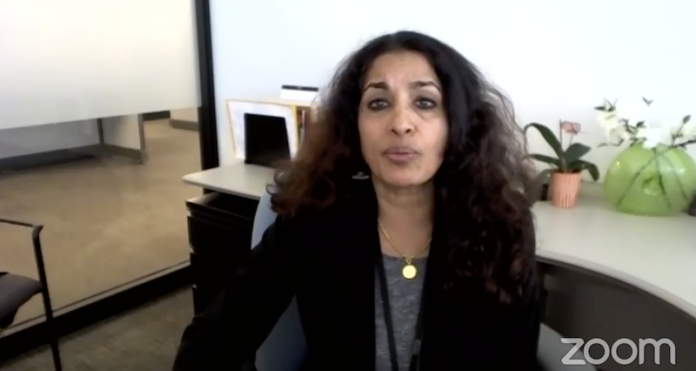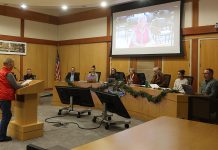County Health Officer Dr. Sundari Mase gave an update on the county’s COVID-19 virus statistics earlier this week, noting changes in the governor’s system for classifying county virus statistics and pointing out similarities and differences between Sonoma County’s virus cases and the cases of other counties in the region.
The new framework, which went into effect on Aug. 31, separates counties into one of four colors based on various COVID-19 metrics. Sonoma County has a purple rating, meaning its statistics show the virus as being “widespread.”
Counties in the “widespread” tier exhibit greater than seven new cases per 100,000 people per day (based on a seven day average with a seven day lag) and have greater than an 8% testing positivity rate (based on a seven day average with a seven day lag). To advance to a different tier, counties have to meet the next tier’s requirements for two weeks and must meet certain health equity measures, such as testing access, data collection and outreach to heavily impacted communities.
“For Sonoma County, given that we have 500,000 people in the population. Over a seven-day average we would have to have less than 35 cases a day over a seven-day average in order to get out of the purple and into the red. Right now, our numbers are higher than that,” Mase said.
The last time new county cases dipped below 35 was an outlier of 11 new cases on July 26 (the days preceding and succeeding July 26 had 93 and 47 new cases reported).
Looking at counties in our region, Sonoma County has the highest case rate, with an average of 15.6 cases per 100,000 people per day (based on a seven-day average, with a seven-day lag). Closest to Sonoma County’s case rate is Alameda County, with an average of 10.8.
While the county’s larger cities have consistently seen the largest number of positive virus cases, Mase said that Cloverdale saw a recent spike, likely due to an outbreak among the agricultural community.
When looking at reasons why Sonoma County has such higher case rates compared to other counties in the region, Mase said that it could be because of four particular differences: Sonoma County is home to more robust tourism and agriculture industries; essential workers in the county live and work within its border; Marin and Napa are both smaller in population but have essential workers like agriculture workers and sales may not be able to afford to live in the county, so cases aren’t counted as being in those counties; and Contra Costa, Alameda, Marin and San Francisco don’t share similar industries to the county that have environments that may be more conductive to virus spread.
“In addition, we’ve had a very different approach to testing,” Mase said. “We’ve been testing a lot and all contacts, asymptomatic and symptomatic, from almost day one. I think in March we implemented our very aggressive contact tracing, testing, isolation and quarantine. Based on our approach, based on the fact that I’ve done a lot of work in tuberculosis which is very similar to an infectious disease like COVID-19. I put in place aggressive, complete contact tracing early on. We’ve actually been finding a lot of these cases based on aggressive contact tracing.”
Mase noted that high positivity rates mean that the county’s contact tracing is working, and that it means the county is targeting the correct areas for testing.
Looking forward, Mase said that the county is looking to expand its public health laboratory capacity to allow it to process a greater volume of COVID-19 tests. The county health lab processes the tests that are deemed the highest priority. Right now the lab can perform about 500 tests and the increase in capacity would allow it to perform 750 to 1,000 tests per day.
“While geographically close, our neighboring counties have really different drivers impacting their case rates and have very different testing strategies,” Mase said.
County epidemiologists pointed out Monterey County as a comparable county when it comes to industry and environment, and its case statistics are nearly identical to Sonoma County’s.
At the time of Mase’s presentation, Sonoma County’s new cases per 100,000 per day was at 15.6 and its testing positivity rate per 100,000 per day was 10.6%. Monterey County was at 15.5 and 10.9%.
“The race and ethnicity of our cases is similar — they have 73% of their cases occurring in Latinx, that’s where we were last month right after we started aggressively testing in Latinx communities,” she said.
Going forward, Mase said that the county can slow the spread of COVID-19 by wearing masks, staying home when ill, social distancing and limiting the amount they go out in public — namely, she noted that people should stay home this Labor Day weekend. At the county level, she said that the county should continue to focus on testing and contact tracing, as well as continue doing outreach to the industries in Sonoma County that have seen virus outbreaks. Namely, the agriculture and skilled nursing industries, as well as those in congregate and vulnerable settings.









